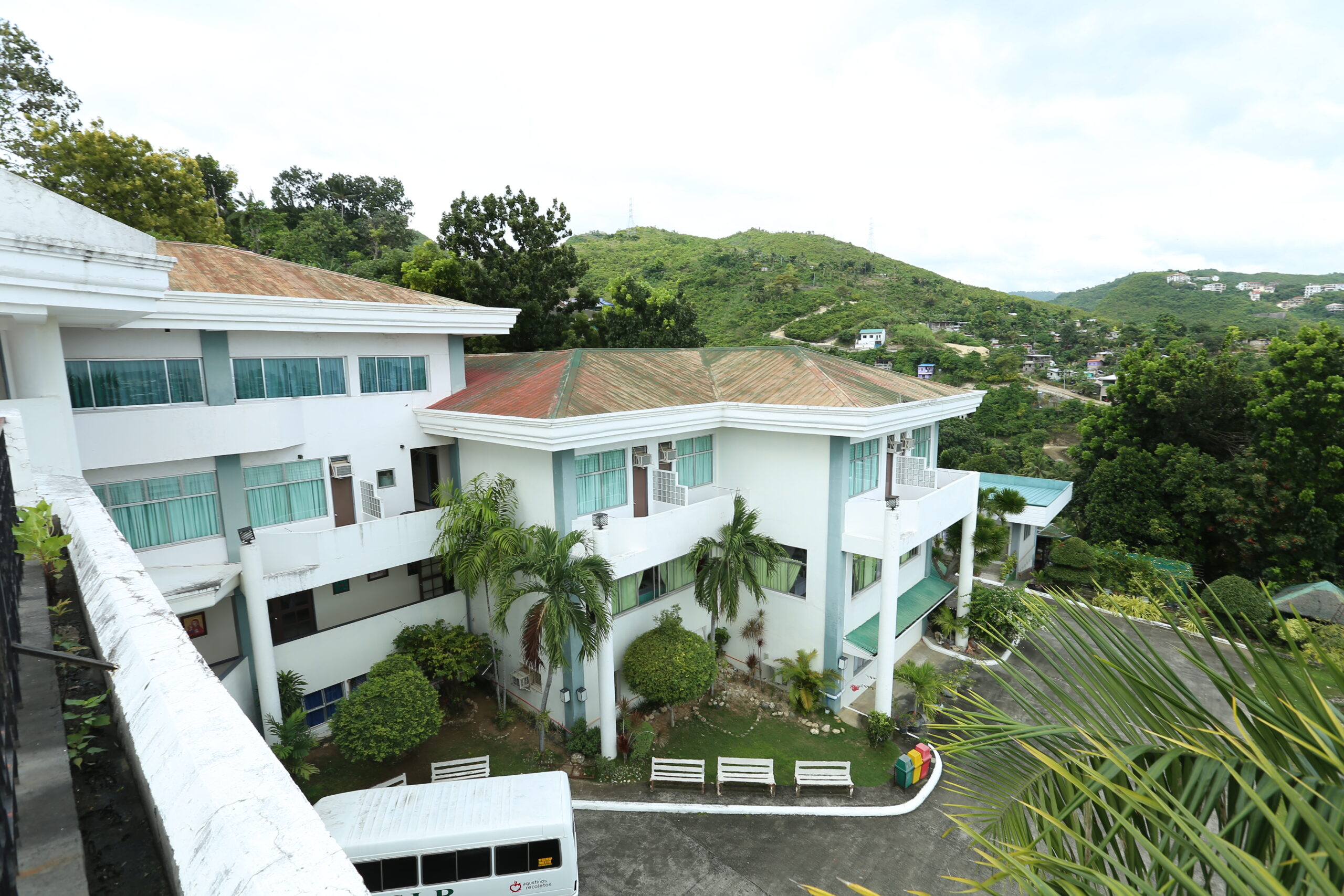Talavera Through The Looking Glass

The prayer house was named after Talavera de la Reina, a city in Spain which is home to a monastery for Augustinian Recollect friars who live a contemplative life.
The structure stands on a lot which measures 22,152 square meters. It was bought by USJ-R on October 24, 1990.
USJ-R had a retreat house, constructed by then Fr. Rafael Cabarles, OAR. It was located close to the Coliseum in the Basak Campus. Almost all facilities e.g., chapel, dormitories, kitchen and dining room were made of bamboo. These served as the spiritual home for recollection and retreat activities for students, faculty and staff, and even seminarians from OAR seminaries. In due time, after years of wear and tear and the increasing demands due to growth in the population of the university, the school board decided to purchase a land and construct a retreat house worthy of the university’s evangelization works for her students, faculty and personnel.
Three prospects were identified: a mountain side of Minglanilla, a two-hectare area in Labangon near Lourdes Parish, and the present location. The mountainous ambience and a rather secluded place won the hearts of the decision makers not only for its theological undertones but also for its beautiful view of Cebu city’s land and sea panorama.
The project was launched on December 5, 1996. The construction of the edifice in Cebu started in March 1997. It was inaugurated in 1998 which marked the 50th year of USJ-R as an institution. After three months, its operation commenced.
Before the efforts of the administration came to fruition, challenges were also met along the way.
“We learned also that the past administration had the interest to acquire the said property but the plan was abandoned for some reasons,” Fr. Buñao recalled.
He continued that the road right-of-way was a problem and there was no access road leading towards the property. The configuration of the property also called for costly and massive development activities. Moreover, the place was known as the killing fields during the early 1980’s because from time to time human bodies (believed to be victims of salvaging) were thrown into that unpopulated and isolated place.
As the years went by, the obstacles were gradually addressed. Integrated in the deed of sale was the contract of perpetual use of the road right-of-way.
“To all those who dreamed for a retreat house… the efforts and the money invested in Talavera are now returning and paying off with the thought that something beautiful has been done for the greater glory of God,” Fr. Buñao concluded.
Based on the article written by Lorraine Mitzi A. Ambrad, “Talavera House of Prayer culminates its 20th founding anniversary celebration,” https://usjr.edu.ph/2019/05/30/talavera-house-of-prayer-culminates-20th-founding-anniversary-celebration/; and Fr. Emiterio Buñao, OAR, “The Making of Talavera House of Prayer, Quiot, Pardo, Cebu City, sjr.edu.ph/wp-content/uploads/2019/05/Talavera-House-of-Prayer-Recoletos-History.pdf.
